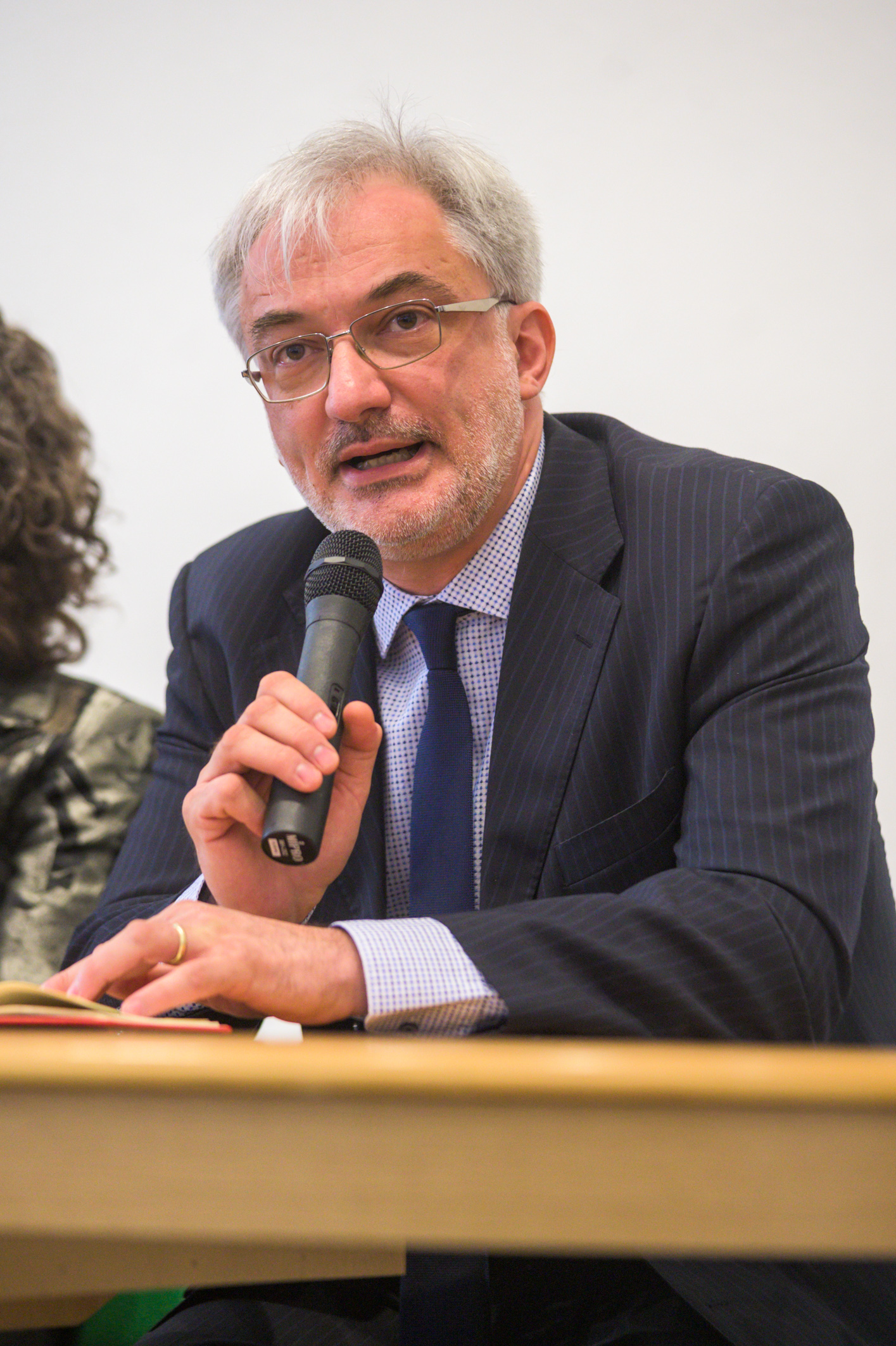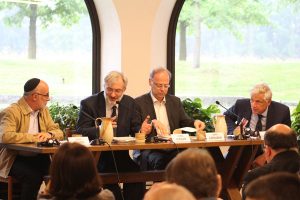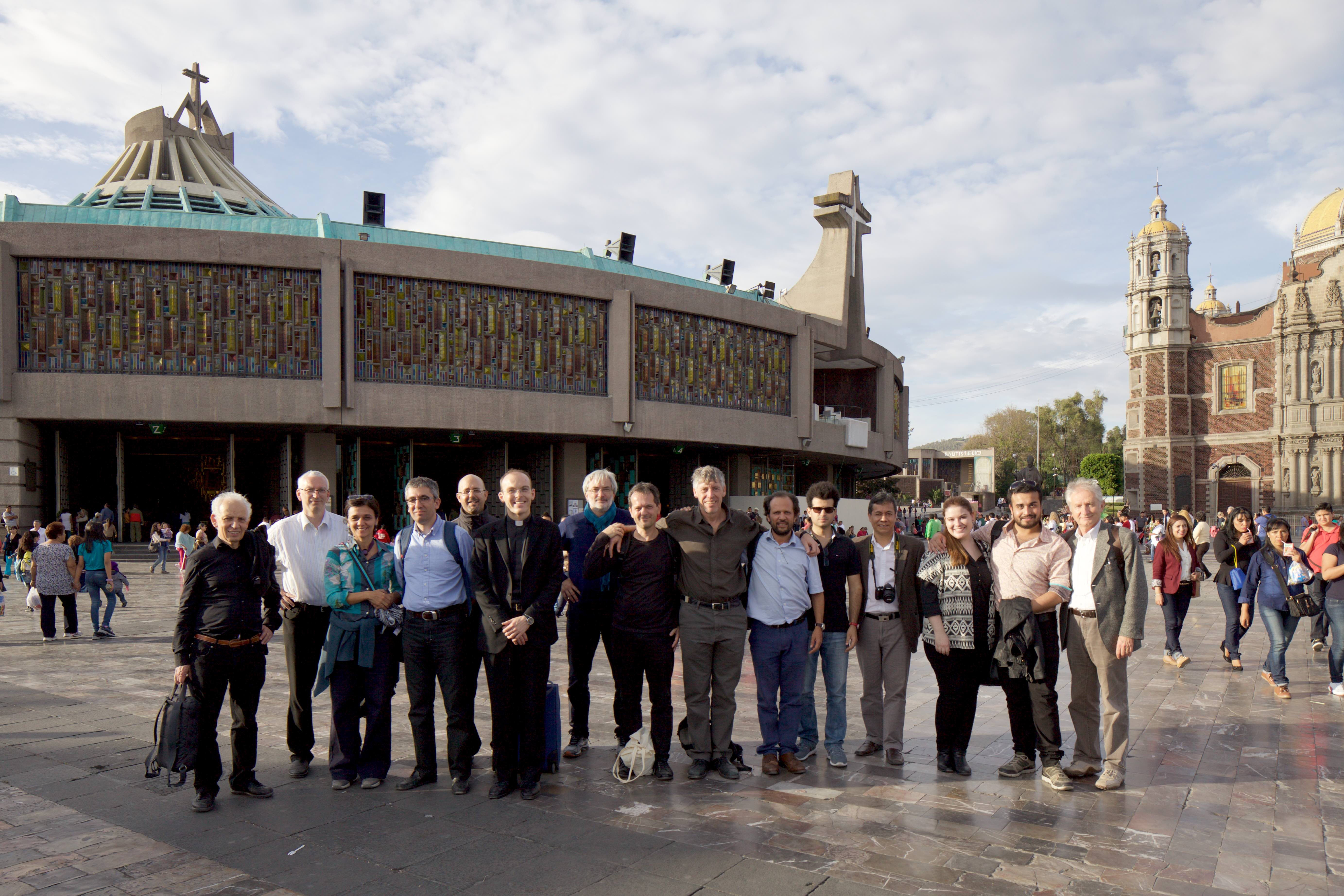
BACKGROUND
1.Can you tell us a bit about your background?
I am an architectural historian; I studied and I have been working at the Polytechnical University of Torino, in the town where I was born in 1970. Currently, I am an associate professor in the Interuniversity Department of Urban and Regional Studies and Planning, where I teach History and criticism of territorial cultural heritage. I have also been the vice-director of the department since 2019. My research activities mainly concern the history of medieval architectures and settlements, medieval urban history, historical analysis of landscape and heritagization processes at a regional scale.
2. How did you become interested in religious heritage?
If you browse through basic university textbooks of the history of architecture, the largest percentage of the buildings in them consist of churches, abbeys, convents, etc. Nevertheless, scholars of the twentieth century rarely paid attention to the liturgical and theological dimension of architectures, nor did they to the role of communities and social practices in shaping the built environment in religious contexts. I realized this when I began to deal actively with ecclesial life. During my years at university I was involved in the Catholic Students’ Associations, being elected national president of the FUCI (Federazione Universitaria Cattolica Italiana) between 1994 and 1996. In those same years, the Italian Episcopal Conference had founded the ‘National Office for Ecclesiastical Cultural Heritage’, and while I was collaborating with other ecclesiastical institutions, I began to take into consideration the possibility of a connection between my scientific traineeship and the ecclesial dimension of heritage knowledge and preservation.
3. How did you get started with FRH?
I was informed of FRH activities mainly through the internet. I was looking for international opportunities to join networks about religious heritage, as I had previously experienced the interest of the international perspective by participating in the initiatives of “Ars et Fides”, the European network of volunteers engaged in religious hospitality in the main cathedrals and sanctuaries (I represented an association of my town, the “Associazione Guarino Guarini”, that I founded before the Jubilee, in 1999). I met FRH “personally“ during the Paris Biennial Conference in 2018, in the face-to-face meeting hosted by Spazio Kor in Asti and in the conference Religious heritage in a Diverse Europe in Groningen, both in 2019.

INTERESTS AND FOCUS
4. Can you tell us a bit about what you currently do outside of FRH?
Currently, I am a full-time professor, so I spend all my time in teaching and research activities. I teach in the school of urban and regional planning, and in a PhD program in architectural and landscape heritage. My department is involved in many fields, so I research diverse topics, but I try to reserve space for the theme of liturgical architecture and the relationship between Church and heritage.
5. What are your activities/work/research focused on concerning religious heritage?
I foster cooperation between academic scholars and ecclesiastical institutions, mainly the National Office for Ecclesiastical Cultural Heritage: I directed research concerning baptismal spaces, Italian churches in the age of II Vatican Council and about the participation of communities and clients in church design[1]. The main results are published in the books Storie di chiese, storie di comunità. Progetti, cantieri, architetture (Gangemi, 2017), Architettura, Chiesa e società in Italia (Studium, 2010, with Carlo Tosco), Luoghi di culto. Architetture 1997-2007 (Motta, 2008) and L’architettura del battistero. Storia e progetto (editor, Skira 2003). I am involved in the scientific committees of the Congresos Internacionales de Arquitectura Religiosa Contemporánea[2] (promoted by Esteban Fernandez Cobian), and the Liturgical International Conferences of the monastery of Bose[3] (so far inspired by fratel Enzo Bianchi). In the last few years I approached the issue of decommissioning and reuse of underused religious heritage, a topic that is gaining recognition in Italy, both in political and academic debate. In 2018, I was involved in the scientific organization of the international conference Doesn’t God dwell here anymore?[4], promoted by the Pontifical Council for Culture, and it was a great human and scientific experience.
Finally, I still cooperate with local cultural associations such as the Associazione Guarino Guarini[5] (mentioned above), bank foundations[6] and the dioceses of my regions, mainly for census activities and exhibitions.
 PROTECTION OF RELIGIOUS HERITAGE
PROTECTION OF RELIGIOUS HERITAGE
6. What do you think is the biggest threat to religious heritage and what do you think is the best way to combat it?
For the Italian context, places of worship are constantly subject to several kinds of both natural and anthropic risks. Concerning the natural risks, Italy has a high risk of hazards such as earthquakes, floods, landslides, fires, avalanches, volcanic activity and much more, which represent relevant threats for heritage. For example, during each major seismic event, many historical churches are severely damaged or irrevocably destroyed. This is due both to the vulnerability of ancient structures and to the high density of churches located in narrow historical centres. During the last decades, the increasing number of floods and landslides due to the consequences of the climate changes affected churches, also those located in areas which are historically considered to be safe. All these natural hazards are aggravated by anthropic factors, mainly related to the abandonment and depopulation of rural areas, phenomena that lead to an increasing level of deterioration, underuse, and scarce maintenance, with consequences of decommissioning and abandonment.
To preserve religious heritage against these risks, a fundamental role must be played by local communities, through the involvement of both the faithful and civil society. The cooperation of national services responsible for safeguarding the heritage, academic institutions and local religious communities is the only answer to these complex threats. Recently the Responsible Risk Resilient Centre of my university, whose board I belong to, has been investigating possible methods and protocols of intervention, maintenance and local participation (on behalf of the National Office for Ecclesiastical Cultural Heritage), and we hope that, after the pandemic, practical applications will be experimented with and enhanced.[7]
[1] http://banchedati.chiesacattolica.it/pls/cci_new_v3/v3_s2ew_consultazione.mostra_pagina?id_pagina=22936
[2] https://revistas.udc.es/index.php/aarc
[3] https://www.monasterodibose.it/en/hospitality/conferences/liturgy
[4] http://www.cultura.va/content/cultura/en/eventi/major/dismissione.html
[5] https://associazioneguarini.org/
[6] https://edificisacri.it/en/home-english/
[7] http://www.r3c.polito.it/project/ecclesiastical-cultural-heritage-risk-assessment-and-planning-prevention-and-regeneration





Follow us: